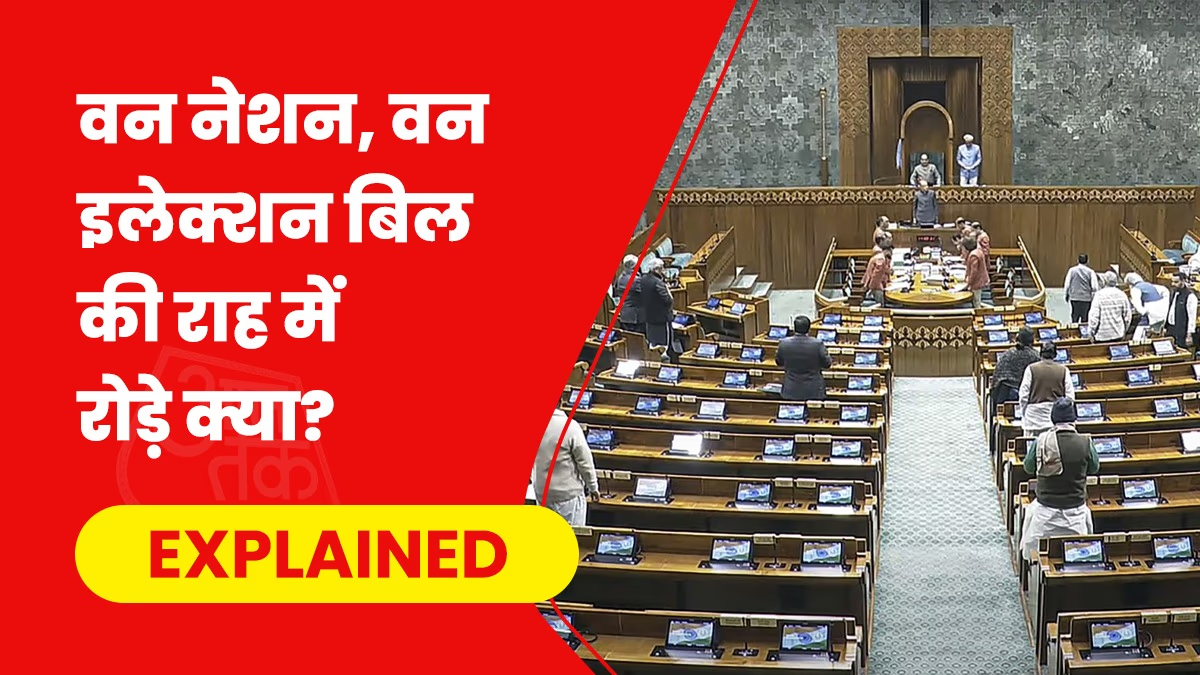The Modi government has long dreamed of implementing 'One Nation, One Election', and now those dreams are taking shape. On Tuesday, they introduced the bill in the Lok Sabha, following a recent Cabinet approval. The government might refer this bill to the Joint Parliamentary Committee (JPC) for further scrutiny.
Two bills accompany the concept of 'One Nation, One Election'. One proposes a constitutional amendment, while the other seeks to synchronize elections in union territories like Jammu and Kashmir and Delhi.
In September of the previous year, a committee led by former President Ram Nath Kovind was formed to deliberate on synchronized elections nationwide. This committee submitted its report in March, and in September, the Modi Cabinet approved it. The report recommended aligning Lok Sabha, Assembly, and Panchayat elections.
However, passing this bill might prove a formidable task for the government as one of them involves a constitutional amendment, which the government lacks a majority to pass.
Where Could the Matter Stumble?
Passing the constitutional amendment bill for 'One Nation, One Election' is no small feat. Since it proposes a constitutional change, it needs the approval of two-thirds of Parliament's members.
The NDA doesn't have a two-thirds majority in Parliament. In the Lok Sabha, all 543 members must participate in the vote, and 362 votes are required to pass the bill. Similarly, in the Rajya Sabha, it needs 164 votes.
Currently, the NDA holds 292 seats in the Lok Sabha and 112 in the Rajya Sabha, along with support from six nominated members.
The opposition parties that contest this bill hold 205 seats in the Lok Sabha and 85 in the Rajya Sabha, necessitating support for the bill's passage.
Who Might Support the Government?
If the government introduces the 'One Nation, One Election' bill, it will require political support from various parties for its passage.
The NDA is composed of significant parties such as BJP, Chandrababu Naidu's TDP, Nitish Kumar's JDU, and Chirag Paswan's LJP (R). Both JDU and LJP (R) support the idea, while TDP has yet to express its stance.
The committee led by former President Kovind reached out to 62 political parties, 32 of which supported the bill, while 15 opposed it. An additional 15 parties did not respond.
JDU and LJP (R) supported the bill, citing time and cost savings. Although TDP has not yet responded, it previously argued before the Law Commission in 2018 that it might harm the constitution's essential framework.
Fifteen parties, including Congress, Samajwadi Party, Aam Aadmi Party, CPM, and BSP, have opposed the bill, while others remained silent on the issue.
What Amendments Are Required?
The committee recommended adding Article 82A to the constitution to facilitate simultaneous Lok Sabha and Assembly elections.
If Article 82A is added and implemented, the terms of state assemblies would end with the Lok Sabha's term. This means if enacted before 2029, the assemblies' tenure will end by 2029.
This implies that the assemblies of all states would align with the Lok Sabha's term, meaning even if an assembly election happened in 2027, its tenure ends in June 2029, allowing simultaneous Lok Sabha and Assembly elections.
What Were the Recommendations for Simultaneous Elections?
The committee chaired by former President Kovind submitted its 18,500-page report to President Droupadi Murmu on March 14. It included recommendations for conducting Lok Sabha, Assembly, municipal, and Panchayat elections simultaneously.
The committee proposed a two-phase approach to simultaneous elections.
In the first phase, they recommended synchronizing the Lok Sabha and state assembly elections by 2029, facilitating regular five-year parallel elections.
In the second phase, they proposed conducting municipal and Panchayat elections, to be held within 100 days of completing Lok Sabha and Assembly elections.
What are the Stages from Bill to Law?
The government has just introduced the bill. It will be sent to the JPC to garner consensus and agreement.
Based on the JPC's report, the bill will be reintroduced in Parliament. If both houses pass the bill, it will be presented to the President. Only with presidential approval will this bill become law.




